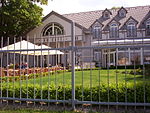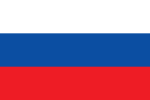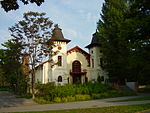Digital Park
Buildings and structures in Bratislava

Digital Park is a complex of seven modern office buildings located in the Bratislava district Petržalka on Einsteinova Street near the highway D1 (section Viedenská cesta - Prístavný most) and the shopping center Aupark on the opposite side. The main building is connected with Aupark by a footbridge over the highway; it connects the two buildings on their second floors.
Excerpt from the Wikipedia article Digital Park (License: CC BY-SA 3.0, Authors, Images).Digital Park
Einsteinova, Bratislava Dvory
Geographical coordinates (GPS) Address Nearby Places Show on map
Geographical coordinates (GPS)
| Latitude | Longitude |
|---|---|
| N 48.130277777778 ° | E 17.107222222222 ° |
Address
D
Einsteinova 23
851 01 Bratislava, Dvory
Region of Bratislava, Slovakia
Open on Google Maps









